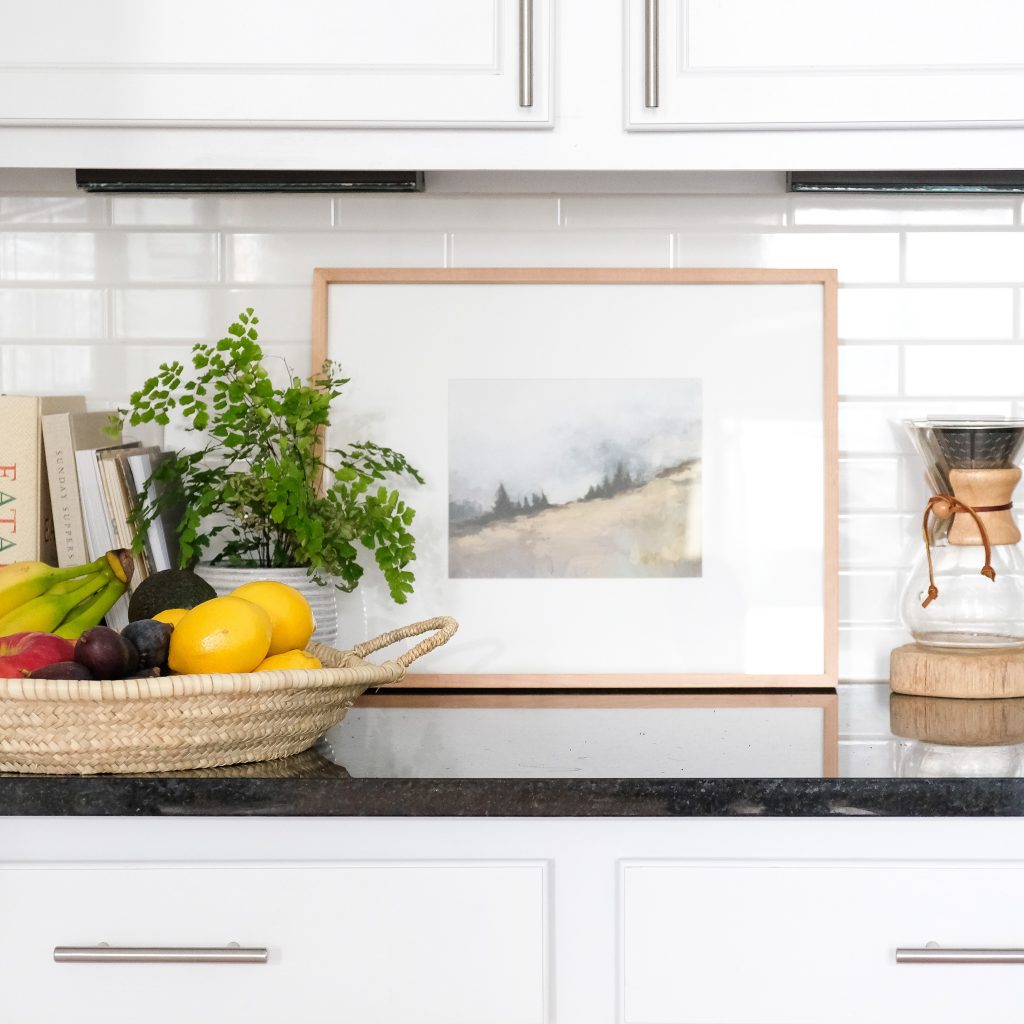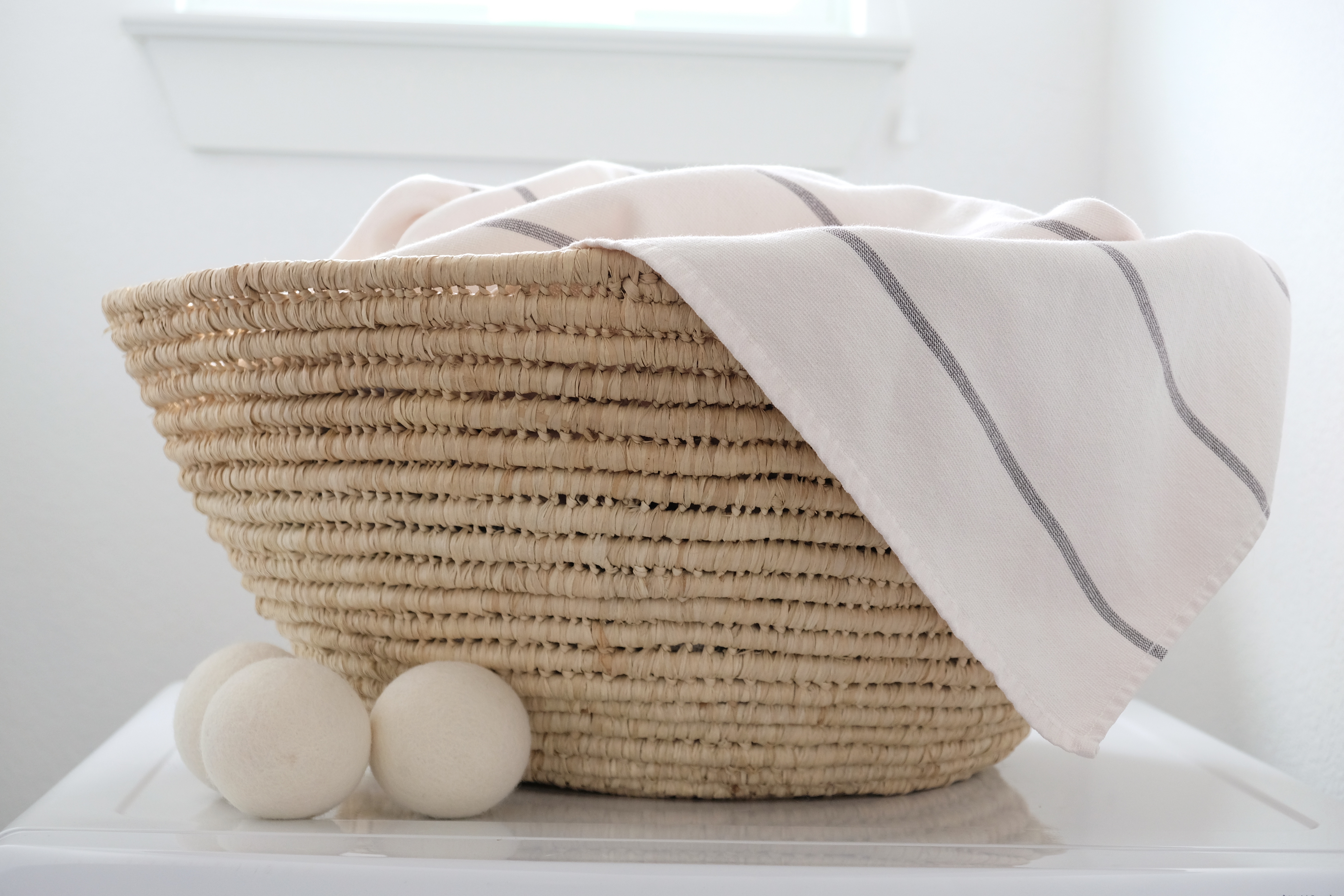
I don’t know about you, but repeatedly spending money on cleaning products and toiletries really isn’t a fun time for me. Not only are these single-use products expensive, they’re usually unsightly and, more importantly, wasteful and potentially harmful to our environment. If you are interested in swapping out some of your every day items for affordable, stylish and sustainable alternatives, here is an easy list to get you started.
Ps. Don’t feel like you need to spend a bunch of money to switch everything over night. I spent a long time incorporating these items into my routine. Give yourself time to form new habits and you may be surprised to find that they are even better than the disposable alternatives!


1 | Wool Dryer Balls vs. Dryer Sheets

Instead of dryer sheets, I put a few drops of lavender essential oil on these and pop them in the dryer. They reduce drying time, mitigate static and keep linens soft, fluffy and smelling fresh – all the work of dryer sheets with none of the waste. These became especially useful to me after I started having allergic reactions to chemicals used in many laundry products. Wool dryer balls are a great, reusable and all-natural solution for anyone with sensitive skin.
Impact: If you typically use 4 dryer sheets per week, you’d save 208 sheets from going to a landfill and roughly $15 per year.


UPDATE: The laundry room got a mini makeover! See more below.
2 | Flour Sack Towels vs. Paper Towels and Napkins
You may have noticed that chef’s always have a white towel looped around their apron belt while cooking. Similarly, I have a set of these flour sack towels to use in place of paper towels when prepping meals. I use a clean one at every meal to wipe my hands, dry dishes and clean up the counters when I’m done. They help keep things moving along (because I’m not constantly reaching for the paper towel roll) and are far less wasteful.

These aren’t your decorative hand towels – they are meant to get dirty! I hide mine in a basket in my pantry.
Impact: The typical household goes through 80 rolls of paper towels per year. If chef’s towels allow you to cut your usage in half, you stand to save roughly $100/year (and a tree!)
3 | Cotton Produce Bags vs. Plastic Produce Bags

You’re likely already used to reusable grocery bags, so this was another habit that was easy to pick up. These cotton mesh produce bags from All Cotton And Linen are washable and come in a variety of sizes. We use these instead of plastic bags to pack and weigh our produce at the grocery store. They even have the tare weight printed on the tag so you can deduct it from the scale.

Impact: If you typically use 12 produce bags per week, you would be preventing 624 bags a year from reaching a landfill.
4 | Beech Wood Brush vs. Sponges
These beech wood pot scrubbers and brushes have stiff, natural fiber bristles that are great for pot-scrubbing.
These cotton and jute scrubbers are full biodegradable and make great, reusable replacements for sponges. They dry faster so bacteria doesn’t stick around and they are machine-washable so you can use them for a long time. For a more traditional sponge, these machine washable bamboo sponges also work well for every day messes (but stick to the jute scrubbers for the tough stuff.)

Impact: If you typically go through one sponge per week, you’d prevent 52 sponges from reaching a landfill and you’d save roughly $50 per year.
5 | Glass Storage Containers vs. Plastic Tupperware
These glass storage containers with bamboo lids are a great non-toxic, longer lasting alternative to plastic food storage containers. Plus, you can bake food right in them. I’ll take any excuse to wash fewer dishes!

Impact: Your glass storage containers should last a lifetime and are recyclable, so you’d be creating no waste.
6 | Reusable Coffee Filter vs. Paper Filters
Coffee aficionados might not like me for this one, since disposable paper filters are said to make a superior cup of coffee. However, if you’re not particular about it, I say switch to a reusable metal filter like this one that we use for our pour-over here. They are very inexpensive and come in a variety of shapes and sizes meant for different coffee makers including pour-over, drip machines (like these) and even reusable pods (like these) for single-cup makers like Keurig.

Impact: If you typically make one pot of coffee per day, you’d save 365 disposable filters and roughly $30 per year.
7 | Silicone Storage Bags vs. Plastic Zip Bags

I hesitated to switch to these bags because they just seemed like a lot more work than a zip-lock. But after a few months of using them, I discovered that we still had a box of plastic bags in the pantry that we hadn’t touched. Turns out, these Silicone storage bags are the heavyweights of our kitchen. They are far more air-tight than a disposable zip bag, they are dishwasher safe, you can boil things in them, freeze things in them, you can even stand them upright and store liquids in them! They are magic.
To clean them in the dishwasher, I push their bottom corners in to create a circle and stand them upside down, using the dishwasher prongs to keep them open. Make sure they are completely dry before storing them.

Impact: If you typically use 2 zip bags per day, you’d be preventing 730 plastic bags from sitting in a landfill and roughly $105 per year.
8 | Reusable Straws vs. Plastic Straws

These are popping up everywhere lately, especially since many cities have committed to removing straws from restaurants and retail locations. We have a variety of bamboo, metal and silicone straws and I like them all. The wide silicone straws are great for smoothies while the metal ones are perfect for icy drinks and cocktails. If you had to choose one, I’d go with the bamboo straws which feel most like plastic.

Impact: The average person uses 2 straws per day. If you decline a straw when you eat out and make the switch at home, you’re reducing waste by over 700 straws per year.
9 | Cotton Bread Bag vs. Paper Bag
These bags from Wild Minimalist are sturdy and breathable – crafted to keep bread fresh. They can also be used as lunch sacks or to keep goodies covered on their way home from the farmer’s market.
Impact: If your store lets you bag your fresh bread yourself, you stand to save about 52 bags per year.
10 | Beeswax Wraps vs. Plastic Wrap
I haven’t purchased saran wrap in years and haven’t missed it one bit. Truthfully, when you have all of these other gadgets I’ve mentioned, the need for any kind of wrap is rare. When I do need something, these beeswax wraps are perfect. They can be used to cover a dish in the fridge or to wrap a sandwich for lunch and can be molded to fit pretty much anything.
They are a little more work in that they can’t get hot (the wax will melt) and require hand-washing in cold water, but I absolutely think it’s worth it to have a few on hand.

Impact: If you go typically through 3 rolls of saran wrap per year, you stand to save 300 square feet of plastic and roughly $15 per year.


So what does all of that add up to? Just ten simple swaps saves 5,500 pieces of trash and approximately $315 per year. Imagine the impact if you swapped out other items as well. More to come!

2 COMMENTS
Leave A Comment
This site uses Akismet to reduce spam. Learn how your comment data is processed.
© 2020 gold coast canvas. all rights reserved.

Chrissy | 25th Mar 19
Love this post. I’ve been eyeing those natural sponges but I am a little picky and I like my dishes to be pretty cleaned off bf they hit the dishwasher. Do they actually hold their own?
admin | 25th Mar 19
Thank you, Chrissy! Yes! The cotton ones are soft but the jute version is rougher than a typical sponge and is very durable. I still rely on the brushes for the really tough stuff though.